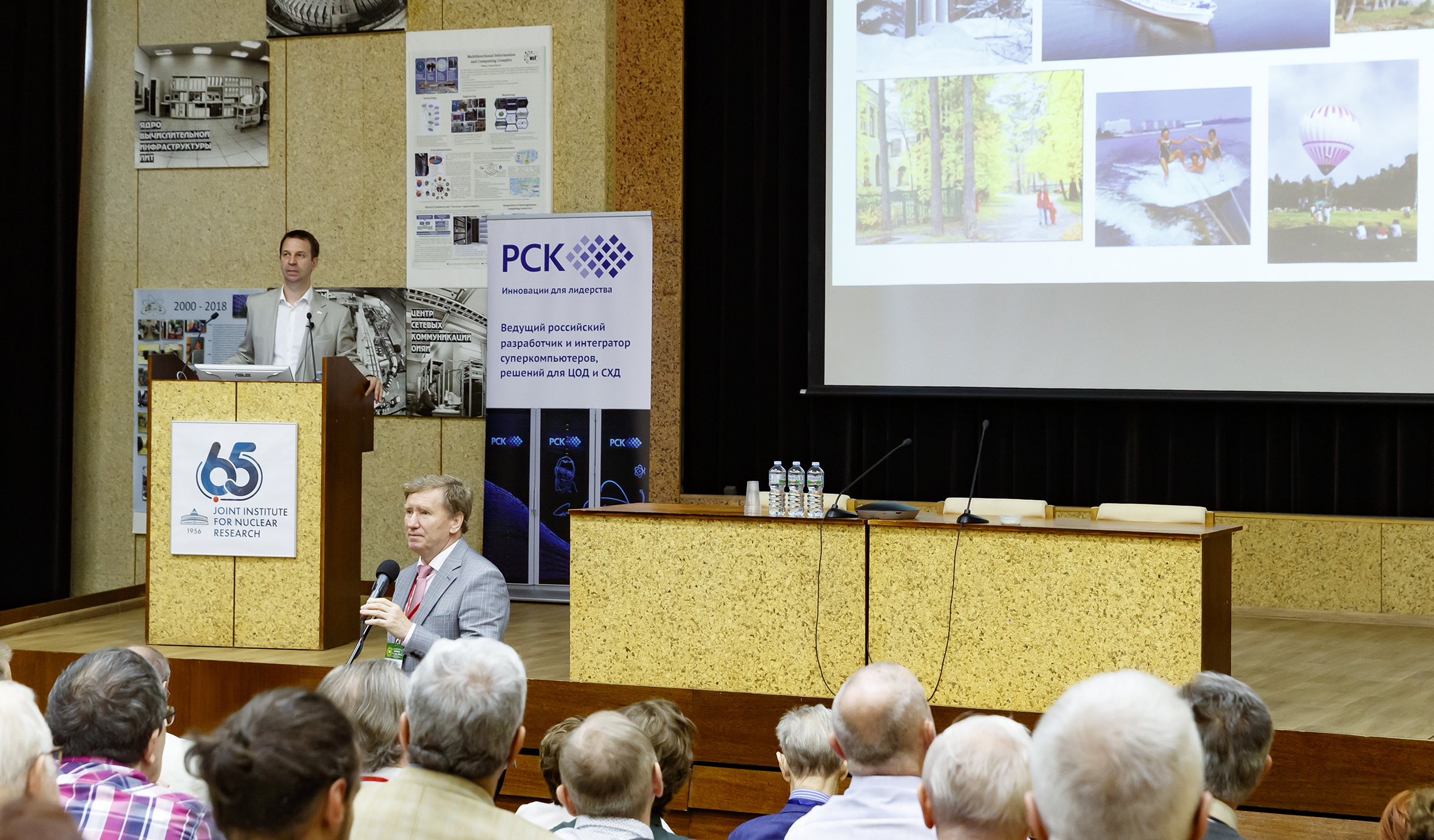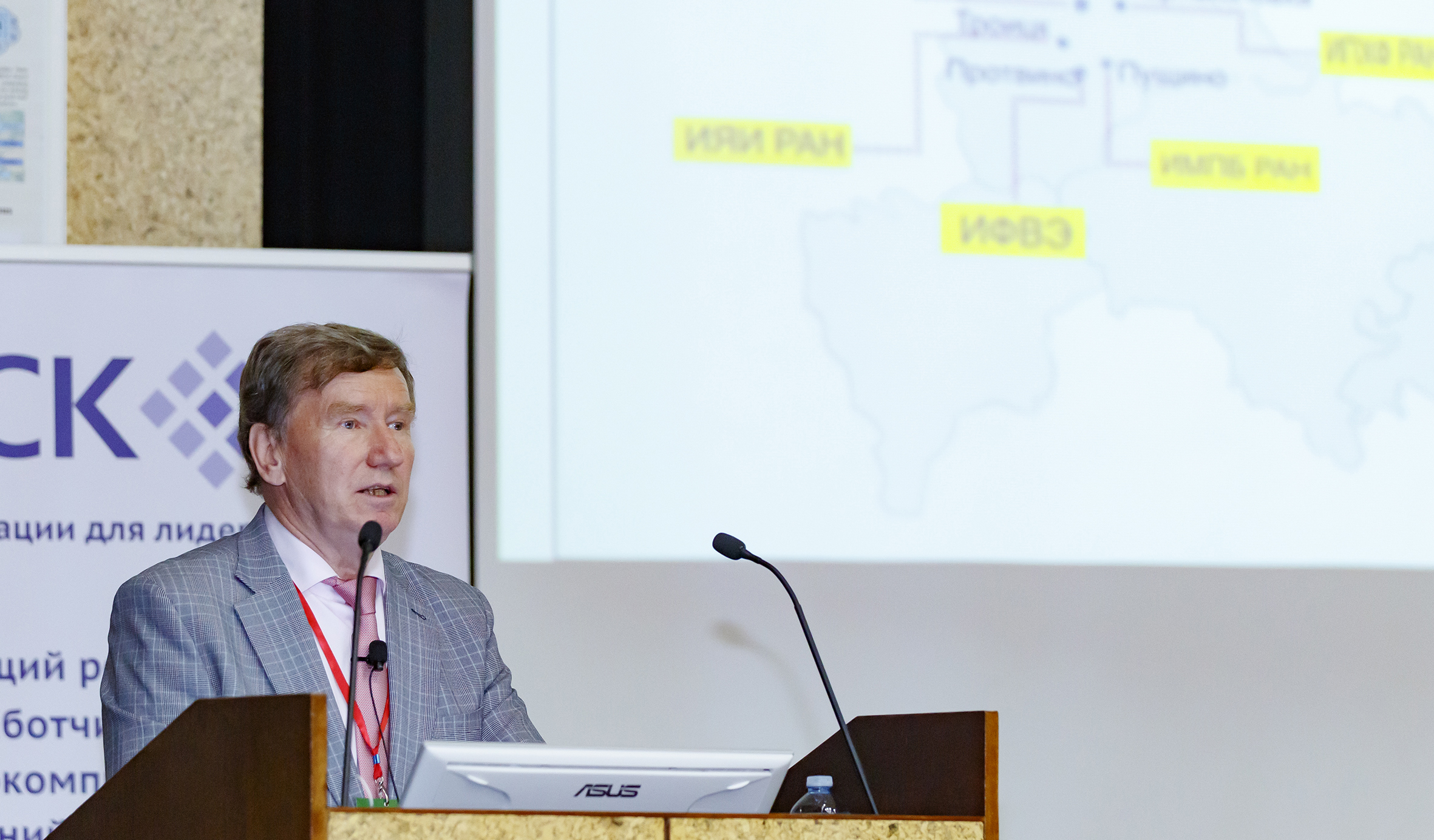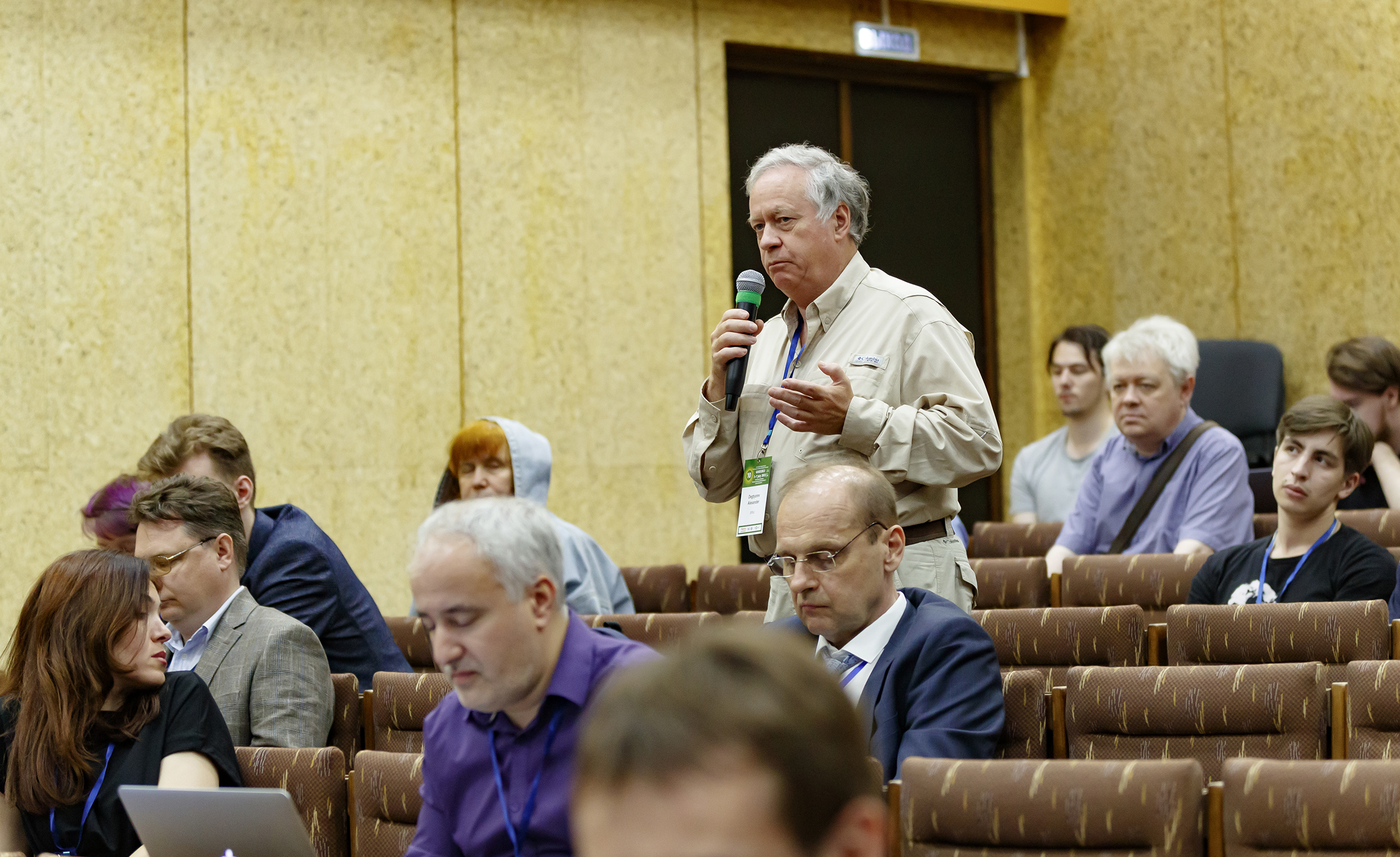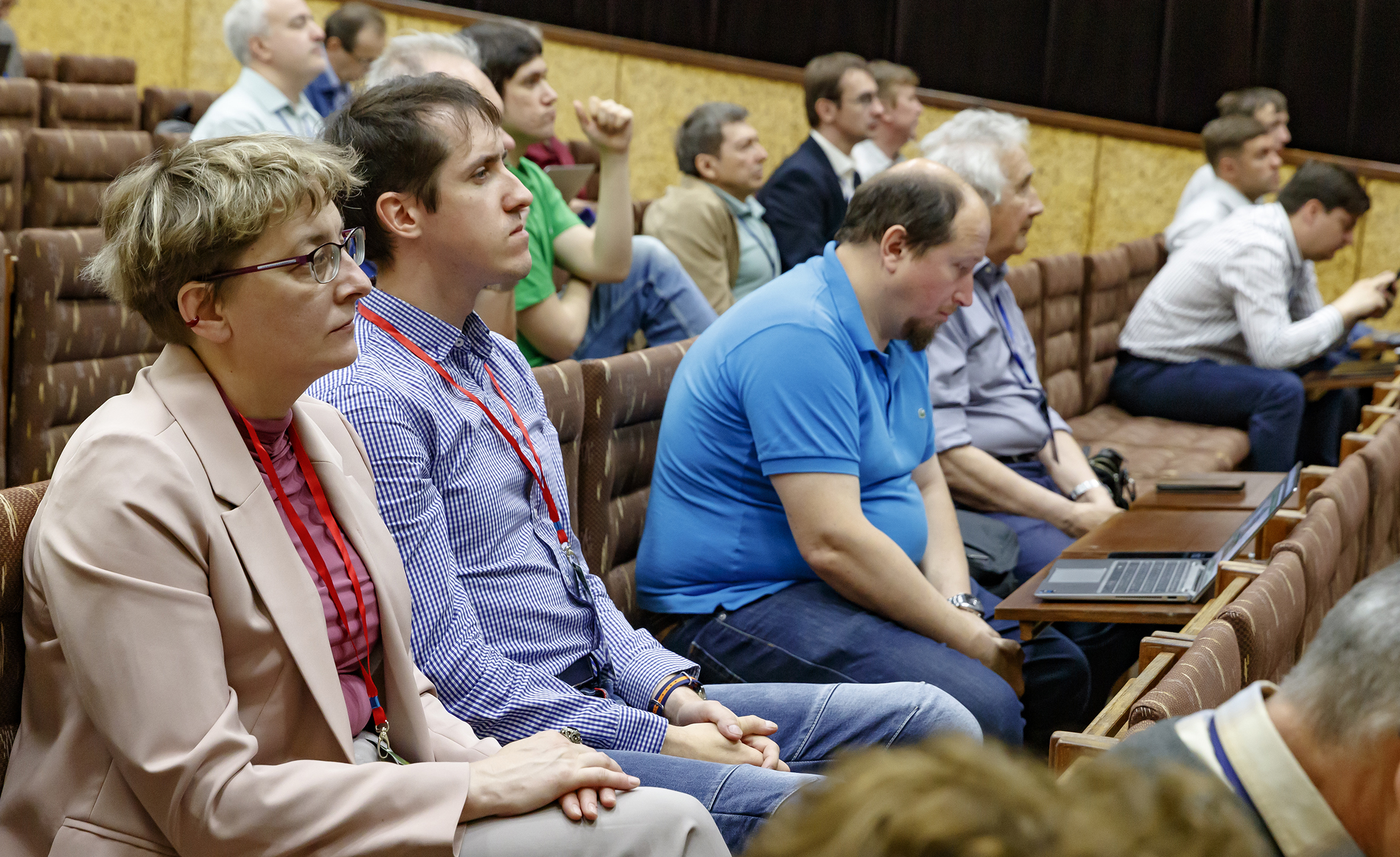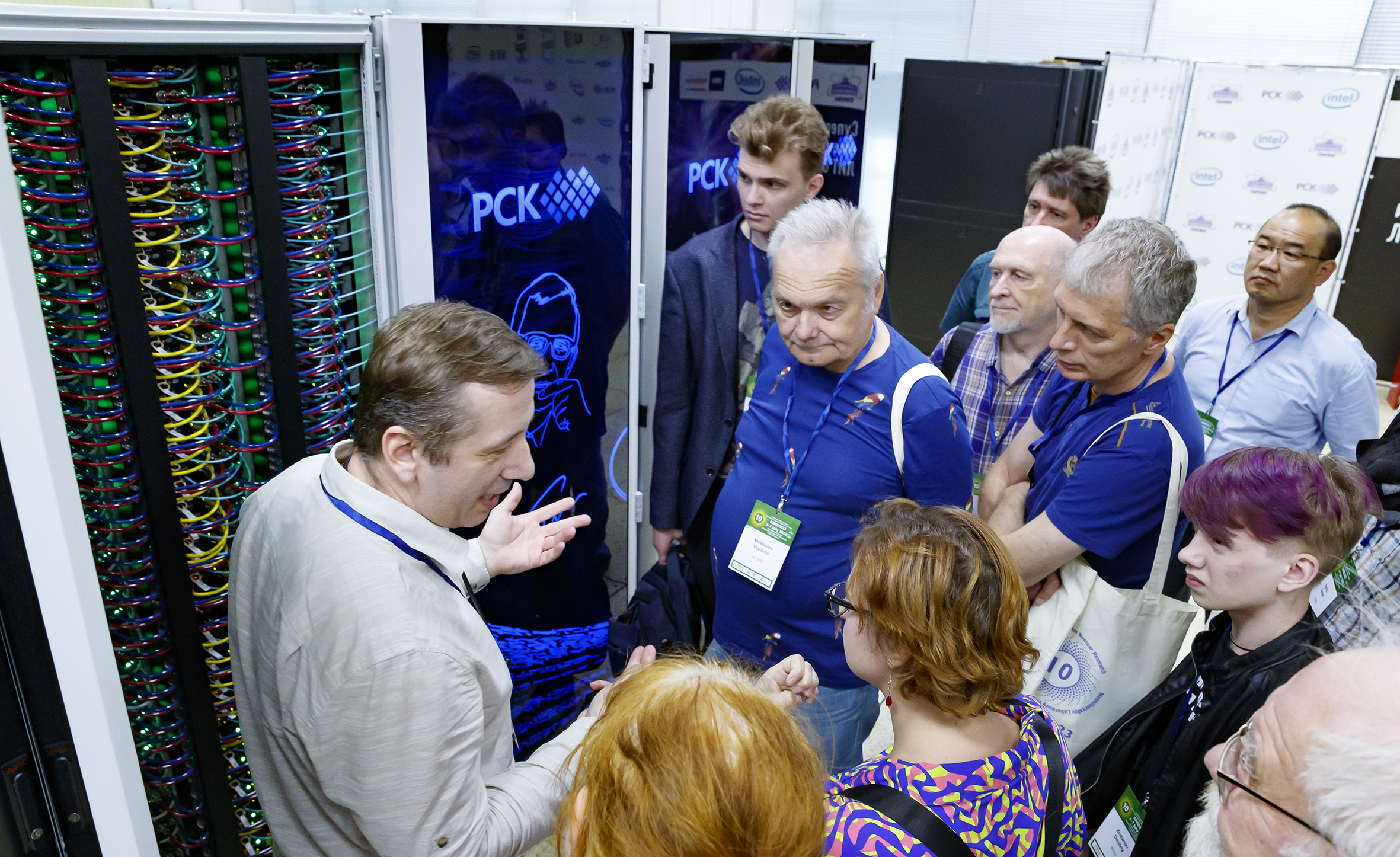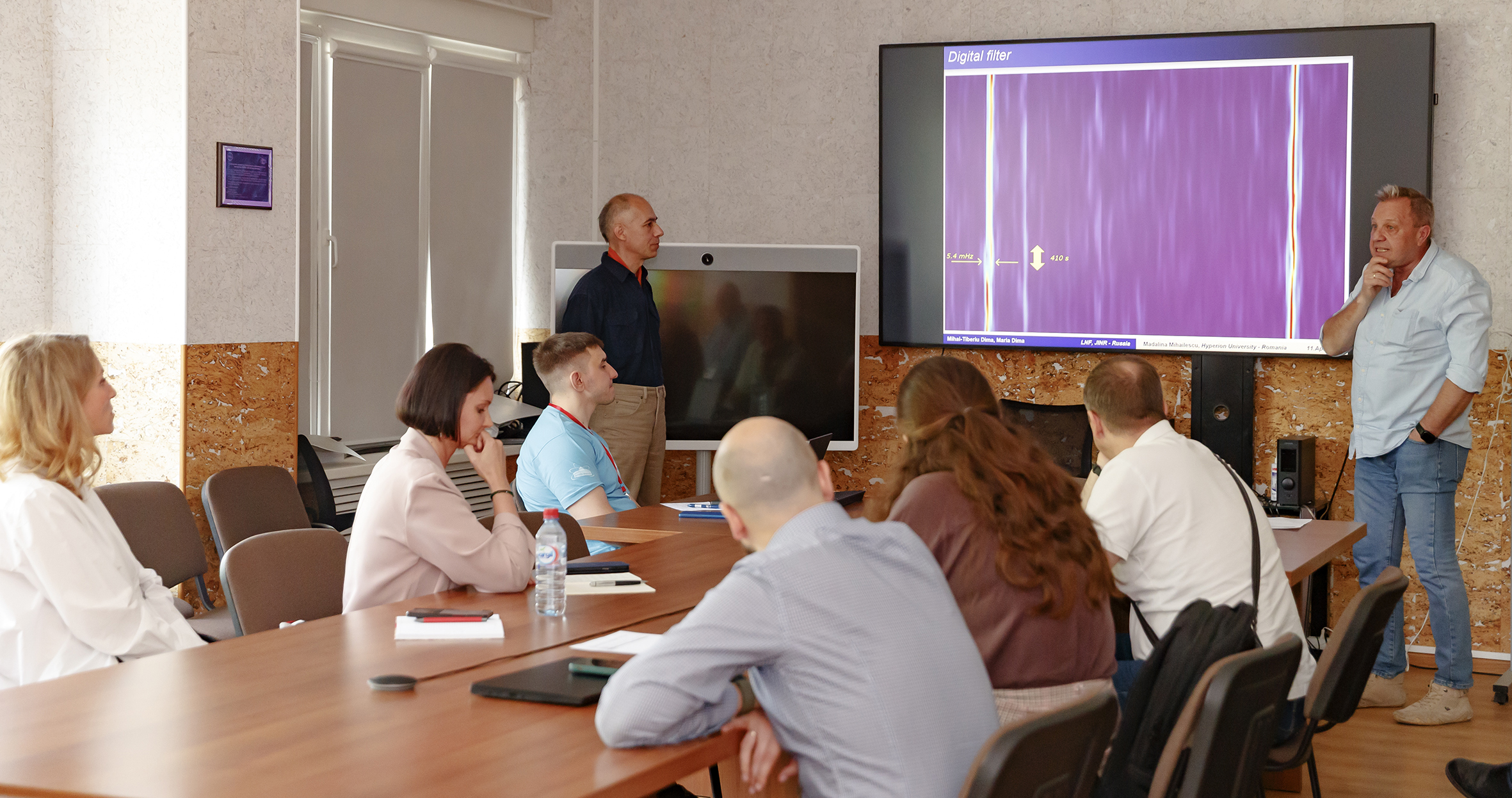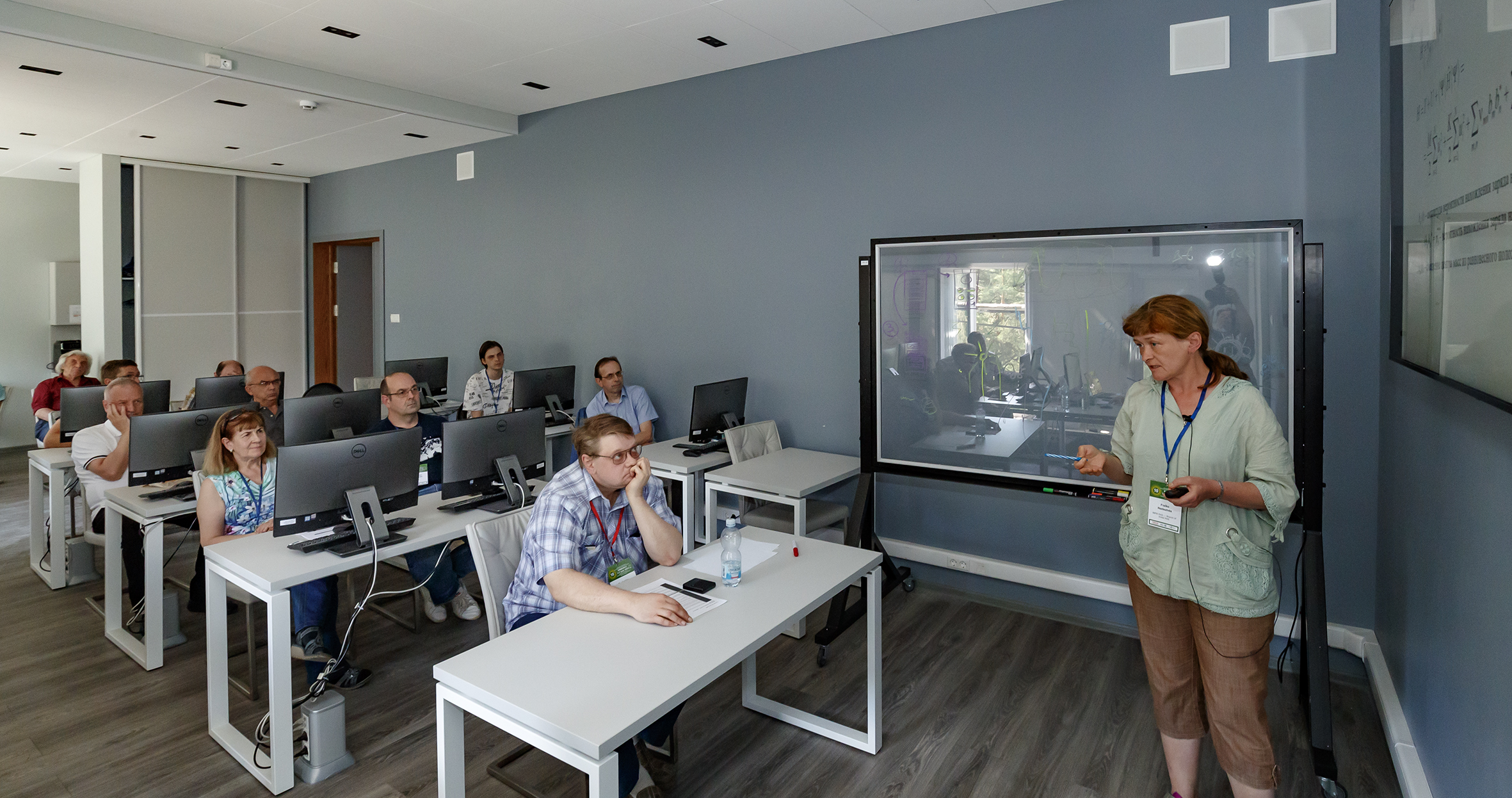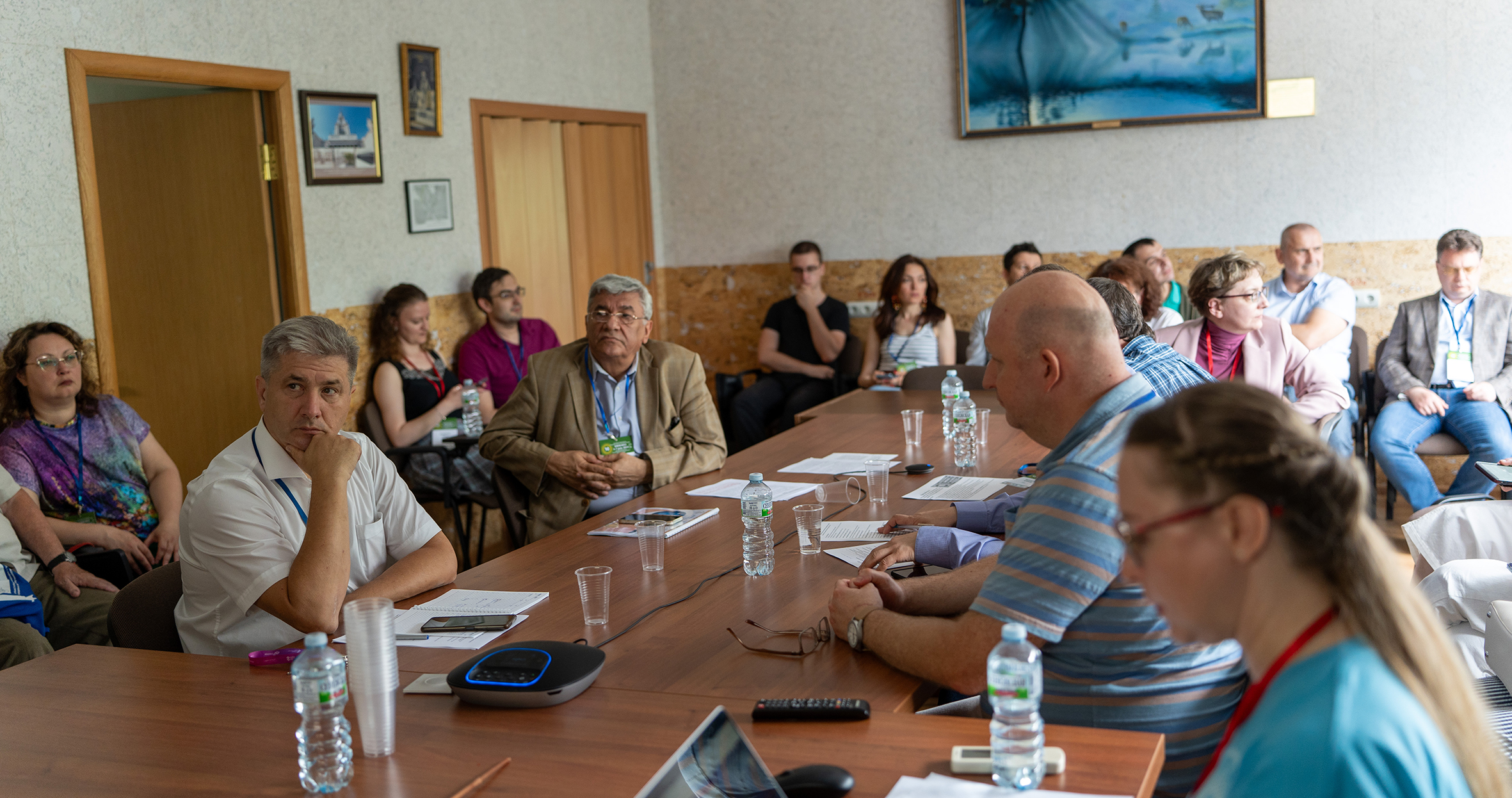International conference GRID’2023 finished in Dubna
News, 18 July 2023
On 3-7 July, the 10th anniversary international conference “Distributed Computing and Grid Technologies in Science and Education” (GRID’2023) was held at the Meshcheryakov Laboratory of Information Technologies in a mixed format. The conference traditionally attracted a large community of Russian and foreign experts, who discussed emerging challenges and prospects related to the use and development of distributed grid technologies, heterogeneous and cloud computing in different fields of science, education, industry, and business. This year, the list of conference topics was complemented with computing for megascience projects, machine and deep learning, Big Data analytics and quantum computing.
More than 280 scientists (210 in person, over 70 remotely) from research centres of Azerbaijan, Armenia, Belarus, Bulgaria, the Czech Republic, Egypt, Germany, Georgia, Iran, Kazakhstan, Mexico, Moldova, Mongolia, Serbia, Switzerland, and Uzbekistan took part in the conference. Russia was represented by participants from 40 universities and research centres.
JINR Director Grigory Trubnikov opened the conference with a report on JINR’s scientific directions and flagship projects. MLIT JINR Scientific Leader Vladimir Korenkov spoke about the status of the JINR Multifunctional Information and Computing Complex and plans for its development.
Skolkovo Quantum IT Group Leader Aleksey Fedorov made a report on the control of quantum many-body systems for participants of the conference.
Vladimir Voevodin (Director of the MSU Research Computing Centre, Director of the MSU Branch in Sarov) delivered a plenary report on supercomputing co-design that enables to simultaneously take into account the architectural features of supercomputer systems, the properties of the software and hardware environment, parallel programming technologies, the structure of algorithms and the specifics of the initial formulations for the effective solution of large computationally challenging tasks. Head of the MLIT Sector of Heterogeneous Computing and Quantum Informatics Dmitry Podgainy continued the topic of supercomputer technologies with a talk on the recent modernisation of the Govorun Supercomputer of JINR. Over the past year, the Govorun Supercomputer has been modernised in terms of CPU, GPU and storage system standards, which opens up new opportunities in solving present-day tasks, especially those related to deep machine learning. General Director of the CJSC “RSC Technologies” of RSC Group Aleksandr Moskovsky spoke about an integrated approach to building high-performance solutions based on the experience of RSC, the leading developer and integrator of supercomputer technologies in Russia and the CIS.
At the conference there were plenary talks on the concept of computing for the experiments of the NICA Megascience Project, namely, MPD (Slavomir Hnatic, a MLIT JINR leading researcher), BM@N (Konstantin Gertsenberger, Head of the Mathematical and Software Group of VBLHEP JINR), SPD (Alexey Zhemchugov, Deputy Head of the Scientific and Experimental Department of Colliding Beams of DLNP JINR). DLNP Deputy Director for Scientific Work Dmitry Naumov spoke in detail about JINR’s neutrino programme (Baikal-GVD, JUNO, NOvA, etc.). The current state of the Worldwide LHC Computing Grid (WLCG) and the challenges that await the WLCG and the experiments at the Large Hadron Collider in terms of processing and storing ever-increasing data streams were presented by Maarten Litmaath (WLCG Operations Coordination Co-chair, CERN).
MLIT JINR Deputy Director for Scientific Work Tatiana Strizh gave an overview of the development of the Tier1 centre at MLIT JINR for the CMS experiment from a prototype to a centre that has the world’s leading position in event processing within the CMS experiment. At present, JINR’s Tier1 is also used for processing data from the NICA experiments. Representatives of the NRC “Kurchatov Institute” delivered reports on the monitoring system of the computing centre at the NRC “Kurchatov Institute”, the main task of which is data storage and processing within experiments at the PIK nuclear reactor.
Participants discussed the resource assembly apparatus using fundamental and general types of data and functions for converting transmitted non-equivalent, unstructured data (including Big Data) in the Internet environment, different molecular devices based on DNA, which enable the solution of bioinformatics tasks. In addition, participants presented solutions of partial differential equations with particular emphasis on a representation at the so-called “intermediate point”. This kind of representation opens the way for parallel algorithms. Two options for implementing a computational experiment, namely, with full parallelisation and achieving the independence of modeling processes with interactive and graphical visualisation, were presented.
Plenary talks on the rapidly developing technologies and methods of machine learning were also delivered at the conference. Participants spoke about the artificial neural networks in data processing for high-energy physics, the certification of machine learning models, detecting objects of various sizes using a neural network model, and other issues.
Director of LRB JINR Aleksandr Bugay spoke about high-performance computing and modeling in radiation biology. He underlined that modeling in biology was always a multi-level hierarchical system that entailed the involvement of many methods and large computational resources. Marco Сosiс (Associate Professor, Vinca Institute of Nuclear Sciences, Serbia) presented the investigation of the quantum dynamics of a collimated electron beam passing through planar channels of a silicon crystal. This method is used in scintigraphy and radiation therapy. Participants delivered reports on quantum IT engineering in the tasks of the intellectual control of physical systems, the status of the JINR cloud infrastructure and the distributed information and computing platform that integrates the cloud resources of the JINR Member States’ organizations and others.
A new feature in the conference programme was the student scientific session, at which students who had passed the selection at the JINR Spring School of Information Technologies delivered talks on the results of their work.
The GRID’2023 programme embraced two workshops. One of them, devoted to the issue of modeling and creating digital twins for new generation reactors, was organized jointly by MLIT JINR, FLNP JINR, and the MBIR Consortium. The second workshop on computing for radiobiology and medicine was conducted by the JINR MLIT and LRB team together with Serbian colleagues. In addition, there were held round tables on the development of IT education with the participation of numerous representatives of universities and on the RDIG-M (Russian Data-Intensive Grid Certificate Authority) distributed infrastructure for data processing, storage and analysis within large-scale scientific projects in Russia.
In total, 30 plenary and over 135 sessional talks were delivered within the conference. Participants had fruitful discussions and proposed new IT projects aimed at the development of distributed and high-performance computing. New directions in collaboration between MLIT and organizations, universities of Russia and the JINR Member States emerged.
Participants expressed gratitude to the organizing committee for the high level of holding the conference.
The presentations of the talks and photos are available at grid2023.jinr.ru. Selected proceedings of the conference will be published in the Physics of Elementary Particles and Atomic Nuclei journal.

